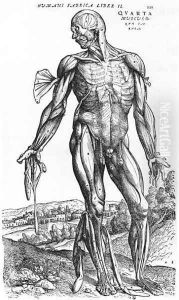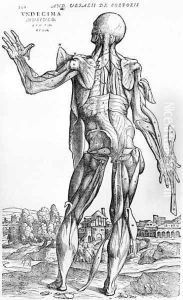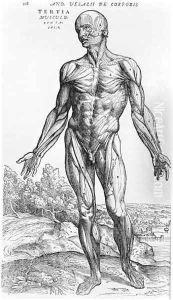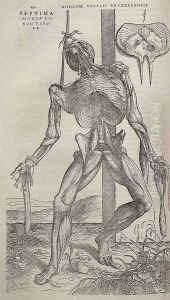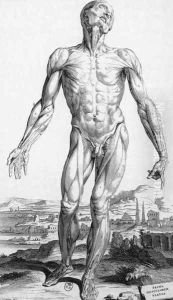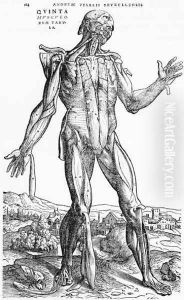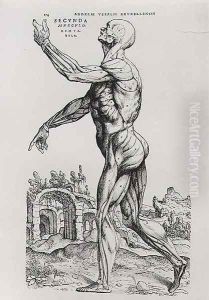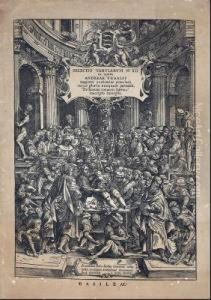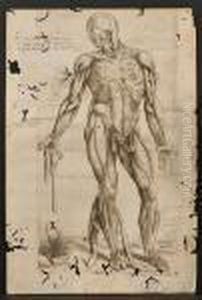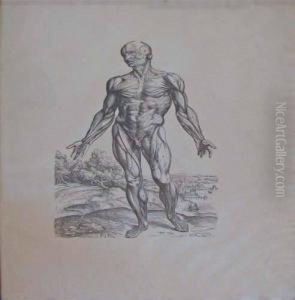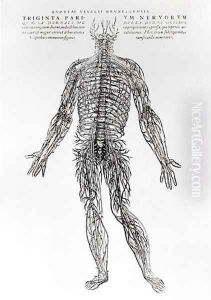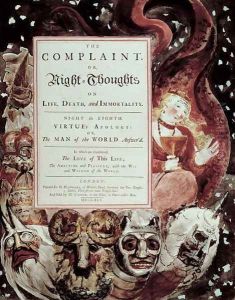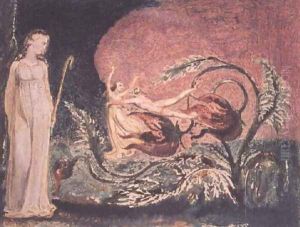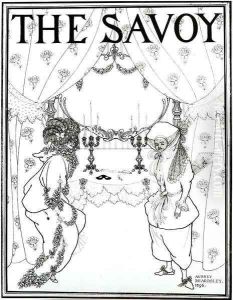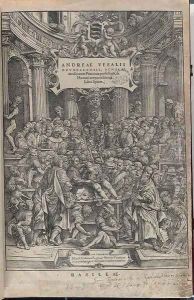





Title page 1543
-
About Reproduction
Discover the allure of art with our faithful reproduction of "Title page 1543", originally brought to life by the talented Andreas Vesalius. Unlike posters or prints, our hand-painted oil painting breathes an unique sense of depth and texture into your space. Every detail, every stroke, and every texture is meticulously recreated, paying the perfect homage to Andreas Vesalius and his artistic vision.
Owning this piece is more than just decoration - it's a statement of your refined taste in art. Let the vibrant colors and intricate details of this replica serve as a daily reminder of the beauty in our world. Elevate your decor and appreciate the richness of art with our replica of this masterpiece.
-
Painting Description
The Title Page of the 1543 edition of "De humani corporis fabrica libri septem" (On the Fabric of the Human Body in Seven Books) is a seminal work in the history of medicine and a masterpiece of Renaissance art and science, authored by Andreas Vesalius. This page not only serves as the introduction to Vesalius's groundbreaking anatomical treatise but also stands as a significant cultural and historical artifact, reflecting the intertwined evolution of art, science, and printing technology in the 16th century.
Andreas Vesalius (1514–1564), a Belgian anatomist and physician, is often referred to as the founder of modern human anatomy. He was a professor at the University of Padua, a leading center of medical research and teaching at the time. Vesalius's work was revolutionary, challenging the prevailing medical theories of Galen, which had dominated for over a millennium. Through meticulous dissection and observation, Vesalius corrected numerous anatomical errors and significantly advanced the understanding of human anatomy.
The Title Page of the 1543 edition is a richly detailed woodcut, encapsulating the spirit of the Renaissance. It depicts Vesalius himself conducting a public dissection, emphasizing the importance of direct observation and empirical evidence in medical science. This scene is set within an elaborate architectural framework, crowded with figures that represent various facets of society and learning, from students and scholars to curious onlookers, illustrating the broad interest in and relevance of anatomical knowledge.
The artistry of the Title Page is attributed to Jan Stephan van Calcar, a pupil of Titian, who is believed to have illustrated many of the anatomical figures in Vesalius's work. The intricate design and execution of the woodcut reflect the high level of craftsmanship and the convergence of scientific inquiry with artistic expression during the Renaissance. The page not only announces the content of the volumes that follow but also visually asserts the importance of anatomy to understanding the human condition.
The publication of "De humani corporis fabrica" marked a turning point in medical history. Its detailed anatomical illustrations, based on firsthand dissection, were unprecedented in their accuracy and detail, making the work an invaluable resource for physicians and artists alike. The Title Page, with its symbolic and literal representations of the new anatomy, heralded the shift from medieval to modern science, emphasizing observation, accuracy, and a critical approach to traditional authorities.
Today, the Title Page of the 1543 edition of "De humani corporis fabrica" is celebrated not only for its historical significance in the advancement of medical science but also as a remarkable example of Renaissance art. It remains a subject of study for historians, scientists, and artists, symbolizing the enduring legacy of Andreas Vesalius and the transformative power of the Renaissance.
-
Lead Time & Shipping
When you order this oil painting replica, it typically takes 2-3 weeks to paint. If the artwork is more complex, it might need a little more time to ensure the best quality. Once it's ready, we'll send you a photo for your approval. After you give the green light, we'll ship it to you for free.
-
Return & Refund
We believe in the quality of our hand-painted oil painting reproductions, and your satisfaction is our priority. If for any reason, you are not completely satisfied with your purchase, we offer a 45-day return policy. You can return your artwork within 45 days of receipt and receive a full refund. Please note that the artwork must be returned in the original packaging and in the same condition as it was received.





